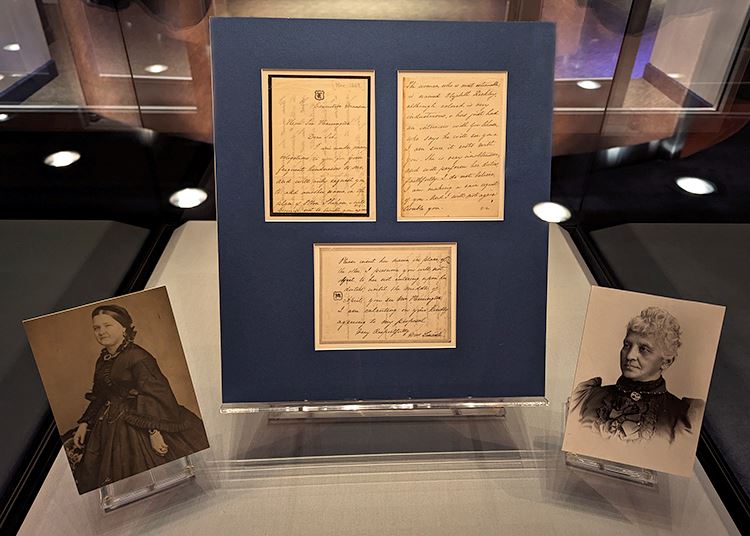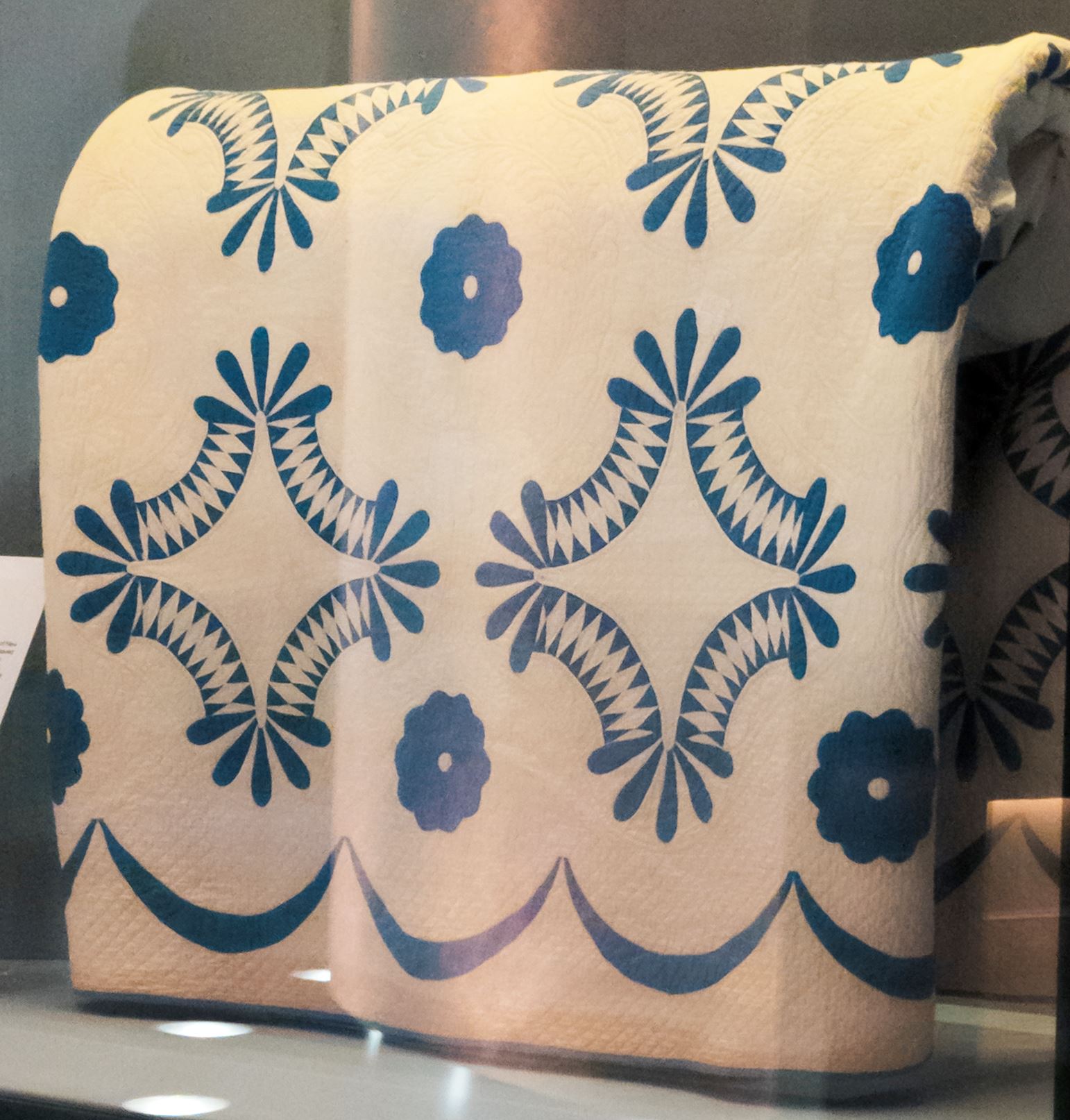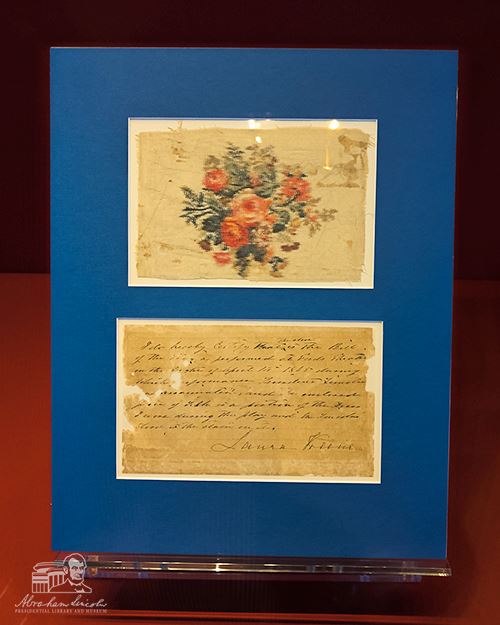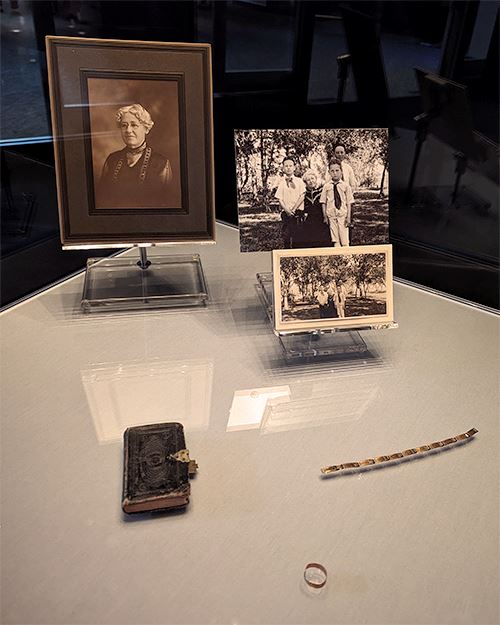By Christian McWhirter
The ALPLM’s Treasures Gallery features the jewels of our collection – the most important and fascinating pieces of history that we safeguard for the public. As we near the end of Women’s History Month, we thought it would be appropriate to point out some of the treasures now on display that introduce us to women of the past, from a girl offering political advice to courageous women building new lives after slavery.
Mary Lincoln and Elizabeth Keckly
Mary Lincoln's close relationship with African American seamstress and advocate Elizabeth Keckly is one of the most fascinating aspects of both women's stories. This letter sheds some light on the personal and racial complexity of their friendship. Mary is writing to Assistant Secretary of the Treasury George Harrington to seek a job for Keckly and speaks highly of her skills, deeming her "very industrious." Yet the racial divide between the two women is also evident. After praising Keckly, Mary adds the caveat “although colored.” She also assures Harrington that Keckly is "very unobtrusive."
These comments expose the vestiges of racism Mary would have learned at a very young age growing up in a family of enslavers, or she could be playing to the racist ideas she assumes Harrington holds himself, Regardless, they reveal the limitations of white perceptions of Black equality even between friends.
 Photos of Mary Lincoln and Elizabeth Keckly flanking Lincoln’s letter seeking a job for her friend.
Photos of Mary Lincoln and Elizabeth Keckly flanking Lincoln’s letter seeking a job for her friend.
The Women of New Philadelphia
In 1836, Frank McWorter founded the town of New Philadelphia, Ill. McWorter was born enslaved but eventually purchased his own freedom. In platting New Philadelphia, he became the first African American to legally do so and welcomed residents of all races. It was also a stop on the Underground Railroad, providing shelter, food, and shoes to people escaping their enslavement. In this way, it served as a beacon of the anti- slavery movement and an integrated community in a time of widespread white supremacy.
New Philadelphia also saw Black women taking on leadership roles as family matriarchs. This quilt is one of many that have survived from New Philadelphia and testifies to the work of the town's women. It was made by a member of the Walker family who, like the McWorters, were born enslaved and bought their freedom. They married into the McWorter family and played an important role in maintaining New Philadelphia and preserving its story. (We are grateful to the McWorter family for lending us this object.)
 A quilt made by the Walker family of New Philadelphia. (Courtesy of the McWorter family.)
A quilt made by the Walker family of New Philadelphia. (Courtesy of the McWorter family.)
Laura Keene's Bloody Dress
Abraham Lincoln was watching the British comedy “Our American Cousin” when he was assassinated on April 14, 1865. The production was especially noteworthy because it starred the most famous actress in America, Laura Keene. As chaos broke out in the theater, Keene rushed to Lincoln's box to try and give him water, cradling his head in her lap.
This is a swatch of the dress Keene wore that night stained with Lincoln's blood, along with her handwritten authentication note. There are two pieces of the dress in the Presidential Library's collection, but archivists only recently uncovered and authenticated this one. This is the first time it has been exhibited to the public. Both pieces are cut into similar shapes, suggesting Keene saved and cut the dress – giving and selling pieces as her theater troupe continued to tour the country. In this way, Keene shared her personal and traumatic connection to Lincoln's life and legacy.
 A swatch of floral fabric stained with blood and a note from Laura Keene.
A swatch of floral fabric stained with blood and a note from Laura Keene.
Grace Bedell Grows Up
On October 15, 1860 – less than a month before Abraham Lincoln's election as president – 11-year-old Grace Bedell wrote directly to him, recommending he "let your whiskers grow to get more votes because your face is so thin" and "all the ladies like whiskers.” Lincoln, of course, did grow a beard and even showed it to Bedell on his trip to Washington to be sworn into office.
Shortly after the Civil War, Bedell married George Billings and the couple moved to a Kansas farm. She visited Springfield at least once to see the Lincoln Tomb and Home before passing away in 1936. These are all objects Grace collected over her long life, including a photo portrait, her personal Bible, and a hand-made copper ring. The importance of her family is evident in the photograph of Grace with her grandchildren and the bracelet inscribed with names of close kin.
 Photos and keepsakes owned by Grace Bedell Billings.
Photos and keepsakes owned by Grace Bedell Billings.
Dr. Christian McWhirter is the Lincoln Historian at the Abraham Lincoln Presidential Library and Museum.